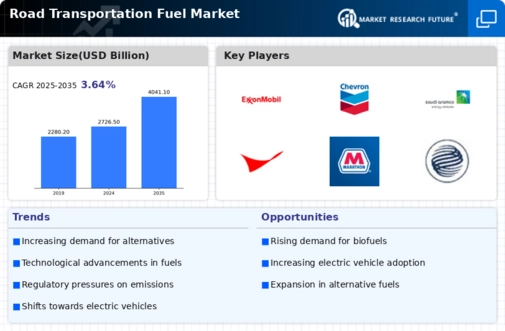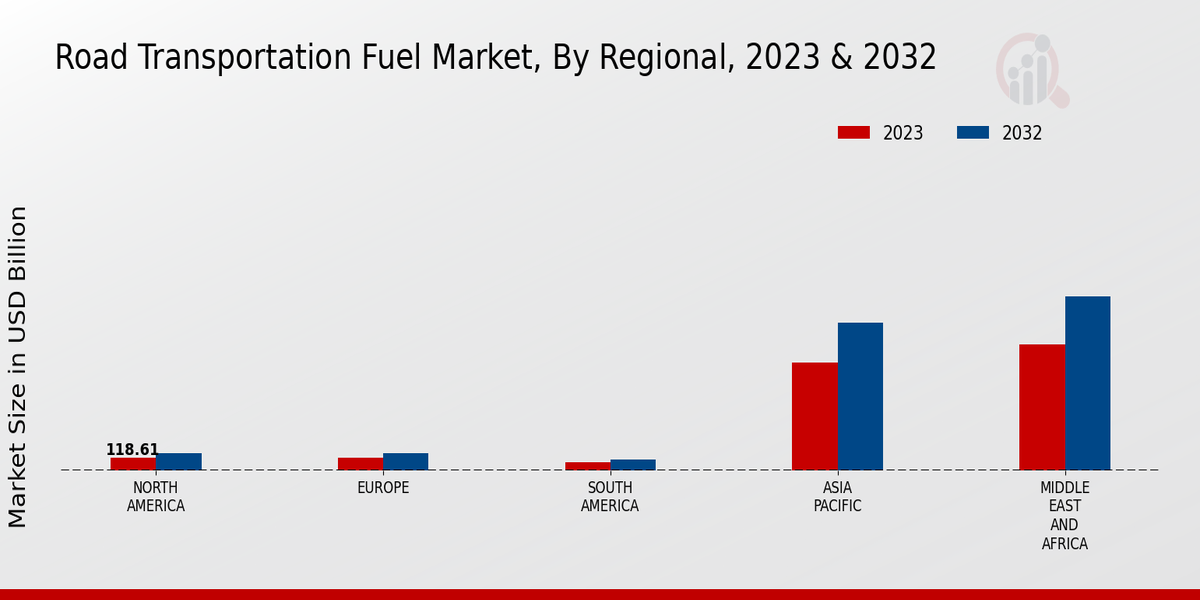Global Economic Growth
The Global Road Transportation Fuel Market Industry is closely tied to economic growth, as increased economic activity typically correlates with higher fuel consumption. As economies expand, the demand for goods and services rises, necessitating efficient transportation networks. This relationship is particularly evident in emerging markets, where infrastructure development and rising disposable incomes are driving vehicle ownership and fuel demand. The projected growth of the market to 4041.1 USD Billion by 2035 indicates the potential for sustained economic expansion and its impact on fuel consumption patterns. Consequently, the industry must adapt to meet the evolving needs of a growing global economy.
Market Trends and Projections
Rising Environmental Concerns
Growing environmental awareness among consumers and policymakers is reshaping the Global Road Transportation Fuel Market Industry. Concerns regarding air quality and climate change are prompting a shift towards more sustainable fuel options. This trend is evident as consumers increasingly favor vehicles that utilize alternative fuels or exhibit lower emissions. The market's response to these concerns is reflected in the development of biofuels and electric vehicles, which are gaining traction. As the demand for cleaner transportation solutions rises, the industry is expected to evolve, potentially leading to a significant transformation in fuel consumption and production practices.
Government Regulations and Policies
Government regulations significantly influence the Global Road Transportation Fuel Market Industry by establishing standards for emissions and fuel quality. Many countries are implementing stricter regulations to combat climate change and promote cleaner fuels. For instance, mandates for renewable fuel use and incentives for electric vehicle adoption are becoming more common. These policies not only drive innovation in fuel technologies but also encourage investment in alternative fuels. As the market adapts to these regulatory frameworks, it is likely to witness shifts in fuel types and consumption patterns, ultimately impacting overall market dynamics.
Increasing Demand for Transportation
The Global Road Transportation Fuel Market Industry experiences a robust demand driven by the rising need for efficient transportation solutions. As urbanization accelerates, the number of vehicles on the road continues to grow, leading to an increased consumption of fuels. In 2024, the market is projected to reach 2726.5 USD Billion, reflecting the essential role of road transportation in global trade and mobility. This trend is likely to persist, with projections indicating that by 2035, the market could expand to 4041.1 USD Billion. Such growth underscores the critical nature of fuel supply in supporting economic activities and daily commuting.
Technological Advancements in Fuel Efficiency
Technological innovations play a pivotal role in shaping the Global Road Transportation Fuel Market Industry. Advances in engine design, fuel formulations, and hybrid technologies contribute to improved fuel efficiency, which is increasingly prioritized by consumers and manufacturers alike. These innovations not only enhance vehicle performance but also reduce emissions, aligning with global sustainability goals. As a result, the market is expected to grow at a CAGR of 3.64% from 2025 to 2035. This growth reflects a broader shift towards cleaner and more efficient transportation solutions, which could potentially reshape fuel consumption patterns in the coming years.













